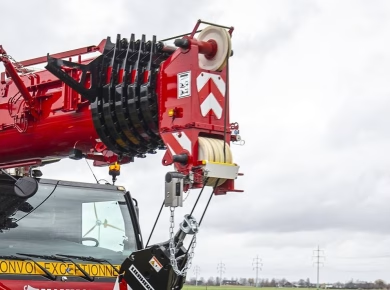The sound of earth collapsing is one that no construction worker ever wants to hear, yet it’s a reality too many face all too often. Trench collapses are among the most dangerous incidents in construction, leading to injuries and fatalities that are often preventable with the right precautions and mindset. Having spent years on job sites, I’ve seen firsthand how the rush to meet deadlines can overshadow safety protocols. It’s crucial for those of us in the construction, health and safety, site management, and compliance training industries to prioritize trench safety, not just as a regulatory requirement but as a moral imperative.
Understanding the Risks of Trench Work
The statistics surrounding trench collapses are staggering. According to the Occupational Safety and Health Administration (OSHA), more than 300 workers are injured each year due to trench-related incidents, with a significant percentage resulting in fatalities. The nature of trench work—often involving deep, narrow excavations—creates an environment rife with hazards. The ground can shift unexpectedly, and without proper safety measures, workers can become trapped, leading to suffocation or crushing injuries.
Common Causes of Trench Collapses
There are several factors that contribute to trench collapses, and understanding these can help us implement better safety practices. Soil type plays a significant role; sandy or loose soils are particularly unstable. Weather conditions can also affect trench safety; heavy rainfall can saturate the earth, increasing the risk of collapse. Furthermore, inadequate shoring or shielding systems can leave workers exposed to danger.
In my experience, I’ve witnessed teams underestimate the importance of assessing soil conditions before excavation. A quick visual inspection isn’t enough. Ground conditions can vary dramatically within a small area, and even a seemingly stable section can give way unexpectedly.
Implementing Effective Safety Measures
So how can we protect our workers and prevent these tragic incidents? The answer lies in a combination of thorough training, proper equipment, and a culture that prioritizes safety above all.
Regular Training and Education
Continuous education is vital in keeping safety at the forefront. Workers should receive comprehensive training on trench safety protocols, including how to identify potential hazards, the use of protective systems, and emergency response procedures. Safety meetings should be held regularly, not just at the start of a project but throughout its duration. These meetings should foster an open dialogue about safety concerns, allowing workers to voice their observations and suggestions.
Utilizing Proper Shoring Techniques
Proper shoring techniques are critical to ensuring trenches are safe for workers. The use of trench boxes or hydraulic shoring systems can provide essential support, preventing collapses even in challenging soil conditions. It’s important to select the right type of system based on the specific site conditions and the depth of the trench. All too often, I’ve seen teams take shortcuts with shoring, believing that they can “make do” without adequate support. This mindset can be deadly.
Creating a Safety-First Culture
Beyond training and equipment, fostering a safety-first culture on the job site is essential. This culture should begin with leadership—project managers and site supervisors must model safe behavior and prioritize safety in every decision.
Encouraging Open Communication
Creating an environment where workers feel empowered to speak up is crucial. Encourage your team to report unsafe conditions without fear of reprimand. In my experience, some of the best safety insights come from the workers who are on the ground. They often notice things that management might overlook, and their input can lead to significant improvements in safety practices.
Conducting Regular Site Inspections
Regular site inspections are another cornerstone of effective trench safety. These should be conducted not just at the beginning of a project but continuously throughout its lifecycle. Inspections should focus on identifying potential hazards, checking that safety measures are in place and functioning correctly, and ensuring that all safety protocols are being followed by the crew.
Responding to Emergencies
Despite all precautions, emergencies can still occur. It’s vital to have an emergency response plan in place, tailored specifically for trench-related incidents. This plan should include clear procedures for rescue operations, communication protocols, and first aid measures.
Training for Emergencies
Conducting drills can be instrumental in preparing your team for a trench collapse scenario. Role-playing rescue operations can help ensure everyone knows their role in an emergency. In the heat of the moment, a well-rehearsed plan can make all the difference.
Reflection and Continuous Improvement
The reality is that trench collapses are tragedies that can often be avoided with diligence and a commitment to safety. Reflecting on past incidents, whether within your own organization or industry-wide, can provide invaluable lessons.
One of the most poignant moments in my career was when a colleague was injured due to a preventable trench collapse. It served as a stark reminder of our responsibility to our teams. We must not only comply with regulations but also strive to create environments where every worker feels safe and valued.
In conclusion, trench safety is not merely a checklist; it’s a commitment to our workforce. By understanding the risks, implementing robust safety measures, fostering a culture of safety, and being prepared for emergencies, we can significantly reduce the likelihood of trench collapses. As professionals in construction and safety, we have the power to change the narrative around trench work and ensure that every worker returns home safely at the end of the day. Let’s take that responsibility seriously and make trench safety our top priority.


